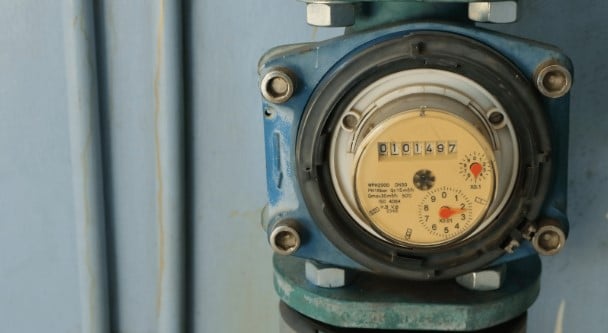How to Determine the Perfect Flow Rate for Your Well: An In-Depth Look at Water Well GPM Charts

Picture this: You’ve just built your dream home with a private water well system, and it’s time to determine the perfect flow rate for your well. You imagine a steady stream of crystal-clear water flowing through your faucets while you peacefully sip your morning coffee.
But hold on a second! What if your well GPM chart is a complete mystery to you? What if your well pump flow rate can’t meet peak standards, leaving you with frustratingly low water pressure during those all-important showers?
Well, my friend, you’re in luck! You’ll be just a few minutes away from understanding how to optimize your water system, ensuring you never experience pressure drops, and having a water supply that can handle your daily use and peak demand.
So, whether you’re dealing with a shallow well or a more complex water treatment equipment setup, we’ll help you navigate the world of flow rates, pressure tanks, and storage tanks to find your water well’s flow rate nirvana.
Get ready to dive into the gallons-per-minute (GPM) secrets that will ensure your well pump and water storage are in perfect harmony.
What is a Water Well GPM Chart?
A GPM (gallons per minute) chart is a valuable tool that helps you understand the flow rate of your water well system. It is a graphical representation of the relationship between the well pump flow rate and the water demand based on the number of plumbing fixtures, various appliances, and daily use. GPM charts are often used with well flow tests to assess the well capacity and water level in shallow and deep wells.
The GPM chart considers the well yield, pressure tank size, storage tank capacity, and peak demand, clearly showing how many gallons of water per minute your well can supply. The chart considers casing size, inside diameter, pump intake, and water flows from the same aquifer.
By examining the gallons drawn, water stored, and water conservation measures in place, you can make informed decisions about your water supply.
Why Is It Important to Understand a GPM Chart?
When it comes to your well water system, understanding a Gallons Per Minute (GPM) chart is essential for ensuring that your well can meet peak demand while providing a consistent supply of high-quality drinking water.
Mastering Your Flow Rate: Balancing Water Supply and Demand
Your well’s flow rate, or how many gallons of water it can deliver per minute, is crucial to maintaining a reliable water supply. The flow rate is affected by factors such as well yield, pump flow rate, and well pump flow rate.
By studying a GPM chart, you can better understand how these factors interact and determine the ideal flow rate to meet peak demand and ensure water conservation.
Keep Your Pressure Tank Happy: Avoiding Overworked Pumps
A GPM chart can help you identify your well system’s appropriate pressure tank size and water storage capacity. This ensures that your well pump isn’t overworked, resulting in a longer lifespan for your pump and less energy consumption.
An accurately sized pressure tank helps maintain good water pressure while avoiding frequent pump cycles, which can wear out your pump over time.
Ensuring Water Quality and Quantity: Storage Tank Considerations
To provide potable water for drinking and other water uses, it’s crucial to have an adequately sized storage tank. By analyzing a GPM chart, you can determine the optimal storage tank size to ensure that your water quality remains high and that there’s enough water to cover peak water demand periods.
Customize Your Pump: Match Your Well’s Unique Characteristics
Every well is different, with varying well casing sizes, water flows, and well flow rates. For example, shallow wells and low-yielding wells may require a more powerful pump to draw enough water.
A GPM chart can guide you in selecting the best pump for your existing well based on factors such as gallons drawn, water level, and how much water your well can deliver during a specific hour.
Conservation Counts: Be a Responsible Water Steward
Understanding a GPM chart also promotes water conservation. It can help you identify areas where you can save water, such as choosing a suitable well pump flow rate or optimizing your well’s capacity to meet high demand without wasting resources.

How to Read a GPM Chart
Regarding water wells, the flow rate is a crucial factor to consider. This refers to the gallons of water per minute (GPM) that your well can produce.
A reasonable flow rate ensures that your well can meet the peak demand of your water system without causing issues like low pressure or pump cycling. Knowing your well water’s flow rate is essential to ensure your water supply meets your demand.
Well Flow Tests: The First Step to Reading a GPM Chart
Before reading a GPM chart, conducting a well-flow test is important. This test helps you determine the well yield and the maximum rate at which your well can produce water. To perform the test, measure the gallons drawn from your well over an hour, such as an hour.
Breaking Down the GPM Chart
A GPM chart is a valuable tool that can help you determine the perfect flow rate for your water well based on the number of gallons per minute it can produce. Here’s how to read one:
Find Your Well Yield: Based on your test results, locate your well yield on the GPM chart.
Identify Peak Demand: Peak demand refers to the highest water flow required by your water system during peak water use periods. Consider all your water usage needs, including appliances, irrigation, and other water-consuming activities.
Determine Well Pump Capacity: The well pump is responsible for drawing water from the well and maintaining the water level in the well casing. A robust pump can draw more gallons per minute, while a smaller pump may struggle to meet the standard. Ensure your well pump can handle the peak demand of your water system.
Consider Low-Yielding Wells: You may need to adjust your expectations and water use if you have a low yielding well. Private well owners with low-yielding wells should aim for a water well flow rate that can sustain their water needs without overtaxing the well or the pump.
Factor in Pressure: Your water flow rate should also consider the pressure needed to maintain a steady flow. The GPM chart typically factors in pressure, measured in pounds per square inch (PSI), to help you find the ideal flow rate.
What is a Good GPM for a Well?
So, how do we determine the perfect flow rate for your water well? This is where the GPM chart comes in handy. It’s like a fact sheet that helps you measure your well’s capacity and match it with your daily water use.
When your pump draws water from the well, it must provide enough gallons per hour to meet your household’s needs. The ideal well flow rate depends on your water demand – think of activities like showers, cooking, and irrigation. A general rule of thumb is to aim for a well flow rate that can supply at least 1.5 gallons of water per foot of well casing per hour.
But remember, every household is different! To fine-tune your well flow rate, you’ll want to evaluate your daily water use and consider factors like peak demand times, pressure requirements, and the water well yield.
Wrapping Up
While it might seem complex, once you’ve mastered the art of reading a well GPM chart, you’ll be well-equipped to take control of your well’s performance and keep your water supply flowing smoothly.
And remember, if you ever need professional help with your well, don’t hesitate to reach out to our friends at WildHeronDrilling. Their team of experienced experts will be more than happy to assist you in optimizing your well’s flow rate and ensuring your water supply remains reliable and safe for years to come.
So embrace the power of the well GPM chart and make the most of your well flow rate. And if you ever need a helping hand, WildHeronDrilling is just a call away!
